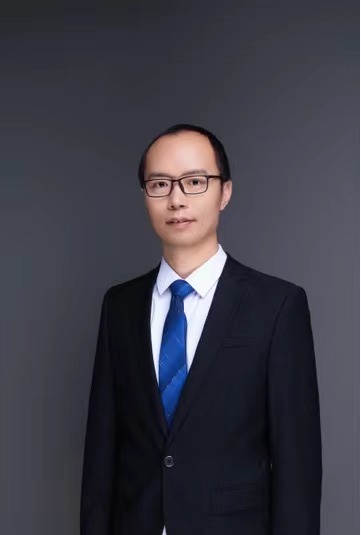






蒋建华,中国科学技术大学教授。2000-2010年在中国科学技术大学学习,获学士和博士学位。之后在以色列魏茨曼研究所和加拿大多伦多大学从事博士后研究。2021年获得国家杰出青年基金项目的资助。主要从事拓扑光子学/声子学、非平衡统计物理等方面的研究。拓展了利用室温光子和声子系统发现新颖拓扑物理效应的研究,特别在拓扑体-缺陷对应关系、高阶拓扑态、非阿贝尔拓扑态等方面做出了一系列享有国际声誉的工作,并在非平衡统计物理和非常规热电效应方面做了一系列基础性、开拓性的工作。发表同行评审学术论文100余篇(含Nature、Nature子刊、Phys. Rev. Lett.等)。曾获中国光学十大进展等奖项,并获得江苏特聘教授、教育部国家级青年人才等荣誉。2022年以项目负责人的身份获得科技部国家重点研发计划的支持。
个人主页
学术兼职
1.“全国统计物理与复杂系统学术会议”学术委员会委员
2.“全国超材料大会”理事会理事
3.National Science Review编辑部成员
4.Science Bulletin副编辑
5.国际电磁研究进展会议(PIERS 2016, 2018, 2019)分会场组织者和主席。
6.《Chinese Physics Letter》,《Chines Physics B》,《中国物理学报》和《物理》杂志青年编辑
其他荣誉
江苏特聘教授
苏州市紧缺人才
中国科学院院长奖
代表作
1.Yang Liu, Shuwai Leung, Fei-Fei Li, Zhi-Kang Lin, Xuefeng Tao, Yin Poo∗, and Jian-Hua Jiang∗, “Bulk-disclination correspondence in topological crystalline insulators”,Nature589, 381-385 (2021). Highlight: Experimental discovery of the topological bulk-disclination correspondence. See Nature: News & Views“Electrons broken into pieces at crystal defects”.
2. Li Luo, Hai-Xiao Wang, Zhi-Kang Lin, Bin Jiang, Ying Wu, Feng Li∗, and Jian-Hua Jiang∗, “Observation of a phononic higher-order Weyl semimetal”, Nature Materials20, 794-799 (2021). Highlight:Experimental discovery of the higher-order Weyl semimetal using a phononic platform.See Nature Materials: News & Views“The sound of Weyl hinges”.
3. Hai-Xiao Wang, Zhi-Kang Lin, Bin Jiang, Guan-Yu Guo, and Jian-Hua Jiang∗, “Higher-Order Weyl Semimetals”, Phys. Rev. Lett.125, 146401 (2020). Highlight:Proposal of a new concept of higher-order Weyl semimetals.
4. Bin Jiang, Adrien Bouhon∗, Zhi-Kang Lin, Xiaoxi Zhou, Bo Hou, Feng Li, Robert- Jan Slager∗, and Jian-Hua Jiang∗, “Experimental observation of non-Abelian topological acoustic semimetals and their phase transitions”,Nature Physics17, 1239-1246 (2021). Highlight: Observation of the Euler class topology and unveil the rich phase transitions of topological semimetals due to the non-Abelian braiding of band nodes. The creation and merging of band nodes are governed by the laws of the non-Abelian topological charges.
5. Xiujuan Zhang, Hai-Xiao Wang, Zhi-Kang Lin, Yuan Tian, Biye Xie, Ming-Hui Lu∗, Yan-Feng Chen, Jian-Hua Jiang∗, “Second-order topology and multi-dimensional topological transitions in sonic crystals”, Nature Physics15, 582 (2019). Highlight:Experimental observation of higher-order topology and multidimensional topological transitions using tunable sonic crystals.
6. Zhi-Kang Lin, Ying Wu∗, Bin Jiang, Yang Liu, Shiqiao Wu, Feng Li∗, and Jian-Hua Jiang∗, “Experimental observation of topological Wannier cycles”, arXiv:2105.02070 under review at Nature Materials (close to acceptance) Highlight: Experimental discovery of topological Wannier cycles---novel fundamental topological phenomena induced by highly localized gauge flux.
7. Hao Ge, Xiang-Yuan Xu, Le Liu, Rui Xu, Si-Yuan Yu, Ming Bao, Jian-Hua Jiang∗, Ming-Hui Lu∗, and Yan-Feng Chen∗, “Observation of acoustic skyrmions, Phys. Rev. Lett.127, 144502 (2021) (Editor’s suggestion) (Featured in APSPhysics Synopsis: Skyrmions Made from Sound Waves). Highlight:The first observation of skyrmion patterns in acoustics.
8. Xiujuan Zhang, Yuan Tian, Jian-Hua Jiang∗, Ming-Hui Lu∗, and Yan-Feng Chen∗, “Observation of higher-order non-Hermitian skin effect”, Nature Communications12, 5377 (2021). Highlight:Experimental observation of higher-order non-Hermitian skin effect.
9. Xiujuan Zhang, Bi-Ye Xie, Hong-Fei Wang, Xiangyuan Xu, Yuan Tian, Jian-Hua Jiang∗, Ming-Hui Lu∗, and Yan-Feng Chen∗, “Dimensional hierarchy of higher-order topology in three-dimensional sonic crystals”, Nature Communications 10, 5331 (2019). Highlight:Experimental discovery of a third-order higher-order topological insulator.
10. Fei-Fei Li, Hai-Xiao Wang, Zhan Xiong, Qun Lou, Ping Chen, Rui-Xin Wu, Yin Poo∗, Jian-Hua Jiang∗, and Sajeev John, “Topological light-trapping on a dislocation”, Nature Communications9, 2462 (2018). Highlight: The first experimental realization of a photonic cavity mode bound to a dislocation due to topological mechanisms.
Group long-term goals: Topological photonics/phononics/polaritonics, Quantum complex systems